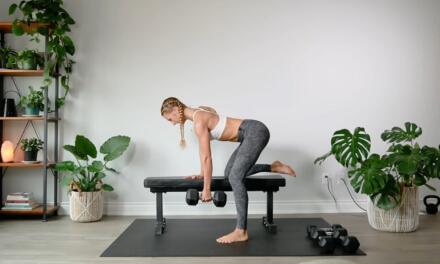No one has to convince you that cardio is excellent for your health. Of course, there is no guarantee that you are protected from illness if you are training. However, studies show that you are risking your health if you are not working out.
Cardio is perfect training for fitness and health, but I would also recommend that you add weight training to your cardio workouts to achieve the best results.
How Does Your Body Respond To Cardio?
Undoubtedly you all know that you burn calories while you workout, but there are also many other changes happening each time you exercise. Those changes that occur after each training session and that keep happening over and over again lead to the cumulative effect of training on each organ in your body.
Neuromuscular Response
Muscles consist of a large number of different fibers, and that number is in reciprocity with its aerobic capacity or the ability to use the oxygen for producing the energy. Fibres type 1 with a big aerobic capacity represents a basic type of fibers that are engaged during cardio exercises.
Fibres type 2 are divided into two groups: fibers type 2a with a moderate aerobic capacity and fibers type 2b with a small aerobic capacity and represent the basic type of fibers that are engaged during the strength exercises.
Muscle fibers grow when they are stimulated by muscle nerve cells or motoric neurons. These neurons stimulate muscle fibers type 1 or 2 but never both
Each time you workout, you activate the neuro system that stimulates specific motoric neurons that induces the contraction of fibers.
Cardio directly stimulates your neuro system, and with cumulative stimulation, some fibers type 2b can be transformed into fibers type 2a, or even some fibers type 2a can be transformed into fibers type 1.
After a while, when the fibers activated with cardio exercises get used to the training, their ability to conduct oxygen and create energy grows.
Metabolic Response
Metabolism speed is connected with the body’s ability to consume oxygen. A person that works out has a 15-20% higher oxygen consumption capacity than a person that doesn’t work out. The higher energy consumption capacity, the longer you can workout and longer it takes for you to feel tired.
Cardiovascular Response
Cardio workouts affect the increase in the number of erythrocytes as well as the overall volume of blood in the human body. This increase of size, along with the more significant amount of erythrocytes, leads to better transport of oxygen into the cells, which then leads to faster energy creation.
The increase of volume also leads to better heart function because it reduces the pressure on the heart during the workout and after it.
Respiratory Response
The more you work out, the function of your respiratory organs gets better. When you work out regularly, the amount of the air you breathe in becomes larger. Getting used to workouts has a double advantage: it influences breathing in larger amounts of oxygen and breathing out larger amounts of carbon dioxide.
How Does Cardio Influence Health?
Physical changes and physiological adjustments of the body that occur as the consequence of exercising lead to better functioning of basic operating systems of the body.
Twenty years ago, most studies that were done to determine the influence of training on human health were done on men, so all the recommendations considering training were based on the needs of men. Now we have many studies that are related to women that are working out their health and longer life.
An active life is related to the reduced risk of chronic degenerative diseases. Physical activity leads to a reduced risk of cardiovascular diseases such as stroke and hypertension.
It is also the main factor in the prevention of obesity and diabetes, as well as osteoporosis and loss of muscle mass due to old age.
How Often And How Much?
All the studies show that there is an apparent connection between physical activity and lower death rates — people who workout are at a smaller risk of early death. The sooner you start to work out, the more you are protected. But this doesn’t apply to those who stop working out.
It is a bit harder determining the connection between how long and how hard you workout and health and longer life. Of course, the harder and the longer you workout is there will be more progress concerning the overall influence of the workout on your health.
What is recommended is a moderate intensity of physical activity since it is related to a reduced risk of heart conditions.
Studies tried to determine the level of activity and energy consumption that is the best for the health of women.
For example, a woman that weighs about 70 kilograms should burn about 1000 calories a week to prevent early death. This goes with the recommendation that each woman should do moderate-intensity workout for at least 30 minutes every day.
High levels of physical activity not only prolongs your life; it also helps you better the quality of life. For most women, the main physical activity is doing housework and taking care of the family.
This kind of activity is important, and it does help you increase the overall physical activity and energy consumption, but it’s by far not enough. To get to physical changes and physiology adaptations, you need to work harder.
Use every free moment you get for walking, hiking, running, or riding a bike. Also, tennis and swimming are great recreational activities if you have kids go with them roller skating.
Find something that you like doing, what you find fun and what you can continue doing for the rest of your life. It takes so little of your time to get so much in every way. What can be more important than a long and healthy life?











